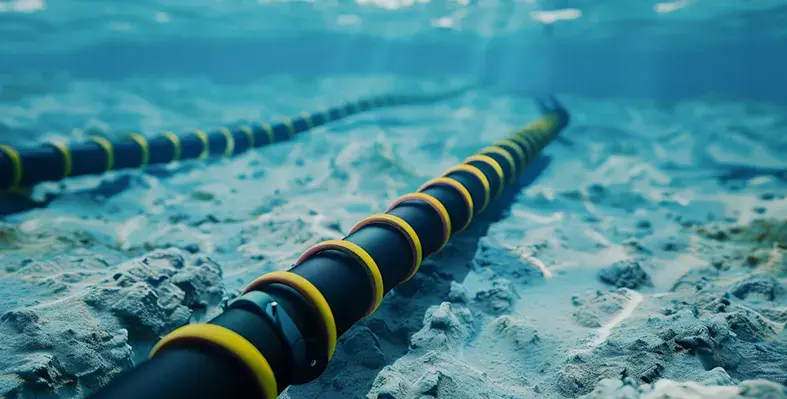For more than three decades, Optical Fibre Cable (OFC) manufacturing units have been serving as the backbone of telecom networks around the world
From 3G rollouts to the upcoming 5G infrastructure, optical fibre continues to be the essential ingredient empowering data networks in the 21st century.
In 2018 alone, the world’s communication networks consumed 512mn fibre km of OFC. Interestingly, 556mn fibre km of optical fibre was manufactured to cater to this cable requirement. It’s often asked why global fibre production is usually 8-10% higher than the global cable consumption, precisely in terms of fibre km.
In a world that is hungry for fibre, how is it that almost one-tenth of the output of fibre is not even making it to new networks? The answer lies in how networks are typically deployed, and in turn, how it affects OFC manufacturing.
Standardisation in Network Rollouts
In building a single part of an operator’s telecom network, a constellation of engineers, technicians, and labour spanning one or more network integrators and infrastructure vendors are involved. Considering the complex ecosystem and tough conditions, certain standard practices have been adopted to streamline network installation projects.
While planning a network rollout, network installers consider everything from installation distances and terrain characteristics to infrastructure availability. This ensures easy handling, minimal damage, higher speed, and better network quality. This comprehensive planning also includes the engineering of the cable, including its material, weight, and lengths, apart from obvious characteristics, such as fibre count, characteristics of optical fibre, etc.
Standardisation is the key to reduce the risk of in-field failures, which can be costly in terms of time, labour, and capital. For outdoor cable networks, the most commonly used cable lengths are one kilometre, two kilometres, three kilometres and so on. In order to allow some extra cable length on hand, operators often allow some flexibility in length. It’s worth noting that these cable length requirements may vary in different regions across the globe.
Meeting On-field Cable Length Requirements
In order to meet the target cable lengths, OFC manufacturers must produce cables of slightly higher lengths. The usual practice is to target 5-10% extra length for the cable to achieve a minimum two kilometres cable length. It means for a requirement of two kilometres, the target cable length should be 2.1-2.2 km. The excess length ensures that the cabler is able to deliver a minimum two kilometres length to the customer or network installer in the field, taking into account losses and damage.
For cable manufacturers, it is important to procure the right volume of commercially usable optical fibre. Therefore, cable manufacturers must share specifications that state the precise minimum length of fibre along with acceptable increments. For instance, 2.1 km, 4.2 km, 6.3 km, and so on take into account the required length plus excess cable.
Preparing Fibre Spools
Since optical fibre manufacturers do not have absolute process control over the length of fibre that will be coiled , they must prepare fibre spools as close to (but greater than) an acceptable multiple of fibre length ordered by the cable manufacturer. In most regions of the world, fibre spools are in the range of 25.2 km to 50.4 km of optical fibre.
Once received, cable manufacturers can cut longer spools of fibre into 2.1 or 2.2 km increments and prepare them for cabling. The length that precisely meets the specified multiple is considered commercially usable. Therefore, any residual length of fibre in the spool is not commercially usable and has no commercial value.
Understanding the Role of the Excess, Left-over Fibre
The excess fibre is neither marketable independently nor commercially useful for the customer, since it is less than any typical acceptable length of cable. However, it is critical in the fibre spool to ensure that the customer can meet the minimum cable lengths it plans to manufacture, while still having adequate length to test the fibre, and compensate for losses during ramp up and ramp down.
Given the complex interdependency of the length of strands of optical fibre in network rollout practices, short or residual lengths of fibre have no commercial value. However, instead of simply being scrapped and disposed of by optical fibre manufacturers, these residual lengths in the form of excess length are shipped to cable manufacturers to ensure higher precision and success rate in downstream cable manufacturing.
As such, the value of excess fibre, non-commercial and non-marketable by itself, is implicit in the overall price charged to cable manufacturers. The optical fibre is cut into small pieces during cable manufacturing. The length of the cut piece is matched with the end cable length. Additionally, some length of extra fibre is kept for testing, repair, and rewinding/recoiling purposes. Most of the time, it is entirely consumed during testing or recoiling.
As manufacturing efficiency improves, fibre breakage reduces, and fibre yield accuracy is enhanced, manufacturers of optical fibre and optical fibre cable will be able to manufacture precise lengths of cable with minimal wastage of raw materials. Technology will play a major role, in not just fibre rollouts and network infrastructure, but even in optimising fibre manufacturing and production.






















